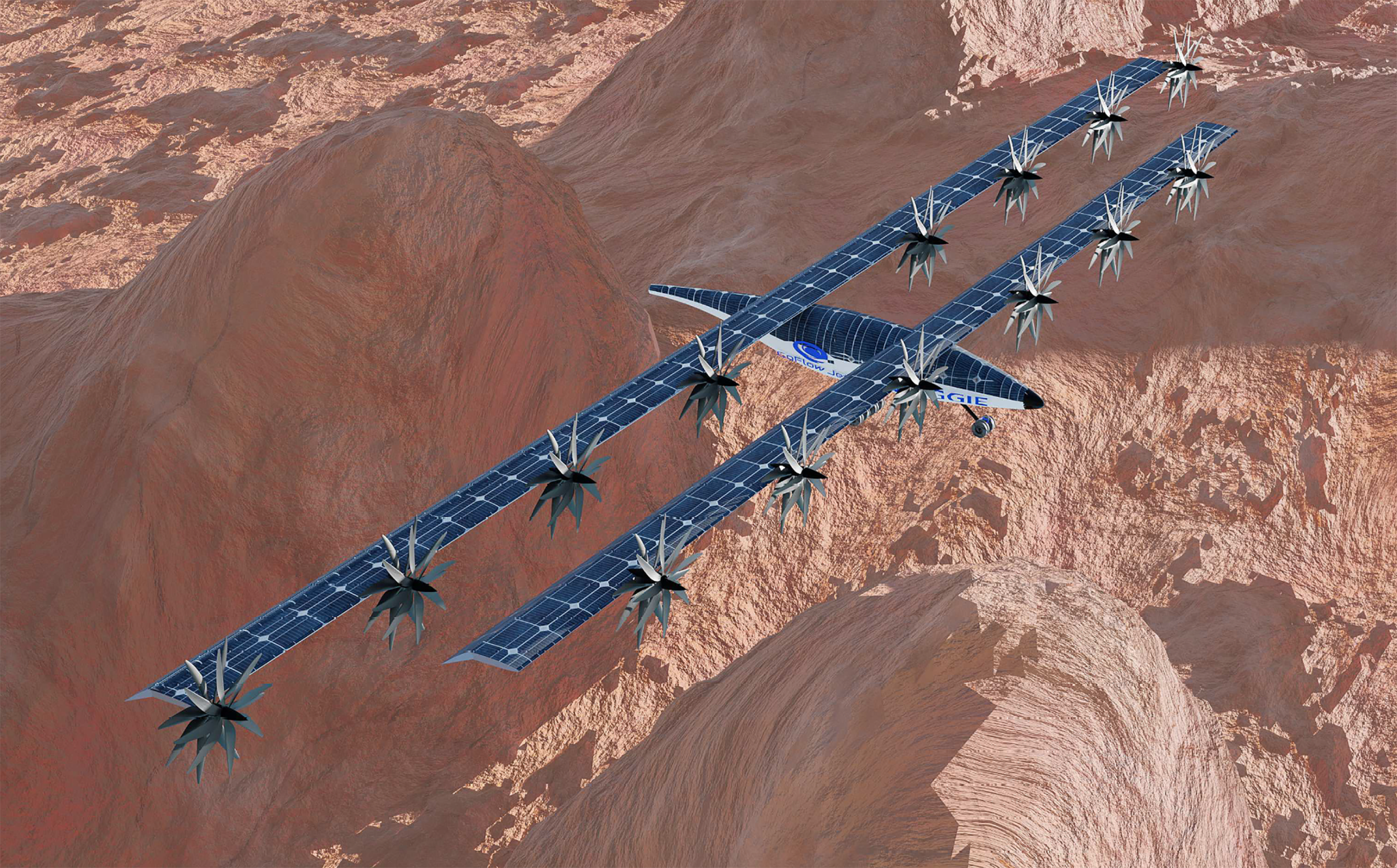Ge-Cheng Zha
Coflow Jet, LLC
We propose to develop a novel global mobility Mars exploration platform , Mars Aerial and Ground Intelligent Explorer (MAGGIE). MAGGIE is a compact fixed wing aircraft with ultra-high productivity efficiency powered by solar energy to fly in the Martian atmosphere with vertical take-off/landing (VTOL) capability, which is enabled by advanced deflected slipstream technology with CoFlow Jet (CFJ). The cruise Mach number of MAGGIE is 0.25 with a cruise lift coefficient CL of 3.5, nearly an order of magnitude higher than conventional subsonic aircraft to overcome the low density of the Martian atmosphere. The ultra-high cruise CL with CL/CDc of 9 is made possible by CFJ that overcomes the low Reynolds number effect on Mars. The range of MAGGIE for a fully charged battery per 7.6 sol is 179 km at altitude of 1,000 m. The total range of MAGGIE per Martian year is 16,048 km. The representative mission for MAGGIE presented would conduct three atmospheric and geophysical investigations, all supporting different timescales of the Dynamic Mars science theme. These include a study of the origin and timing of the Martian core dynamo from the weak magnetic fields found in the large impact basins, a regional investigation of the source of methane signals detected by the Tunable Laser Spectrometer on the Mars Science Laboratory in Gale crater, and mapping of subsurface water ice at high resolution in the mid-latitudes where it has been observed from orbit. The conceptual MAGGIE system study indicates that the concept appears to be feasible, but need to be further investigated, designed, and verified under Martian atmospheric conditions in Phase I. MAGGIE would be able to perform the first global-scale atmospheric mission at Mars and revolutionize our capability of exploring almost the entirety of the Martian surface. It is the first concept to enable ongoing exploration of this region of Mars and would provide a substantial leap in capability for NASA’s exploration of the Red Planet. The attractiveness of airborne missions on Mars has been amply demonstrated by the Ingenuity helicopter. MAGGIE would be similarly engaging to the public, both in its audacity, and in the variety of environments it could explore, study, and image. The technology would also enhance VTOL aircraft technology on Earth and other planets.






























